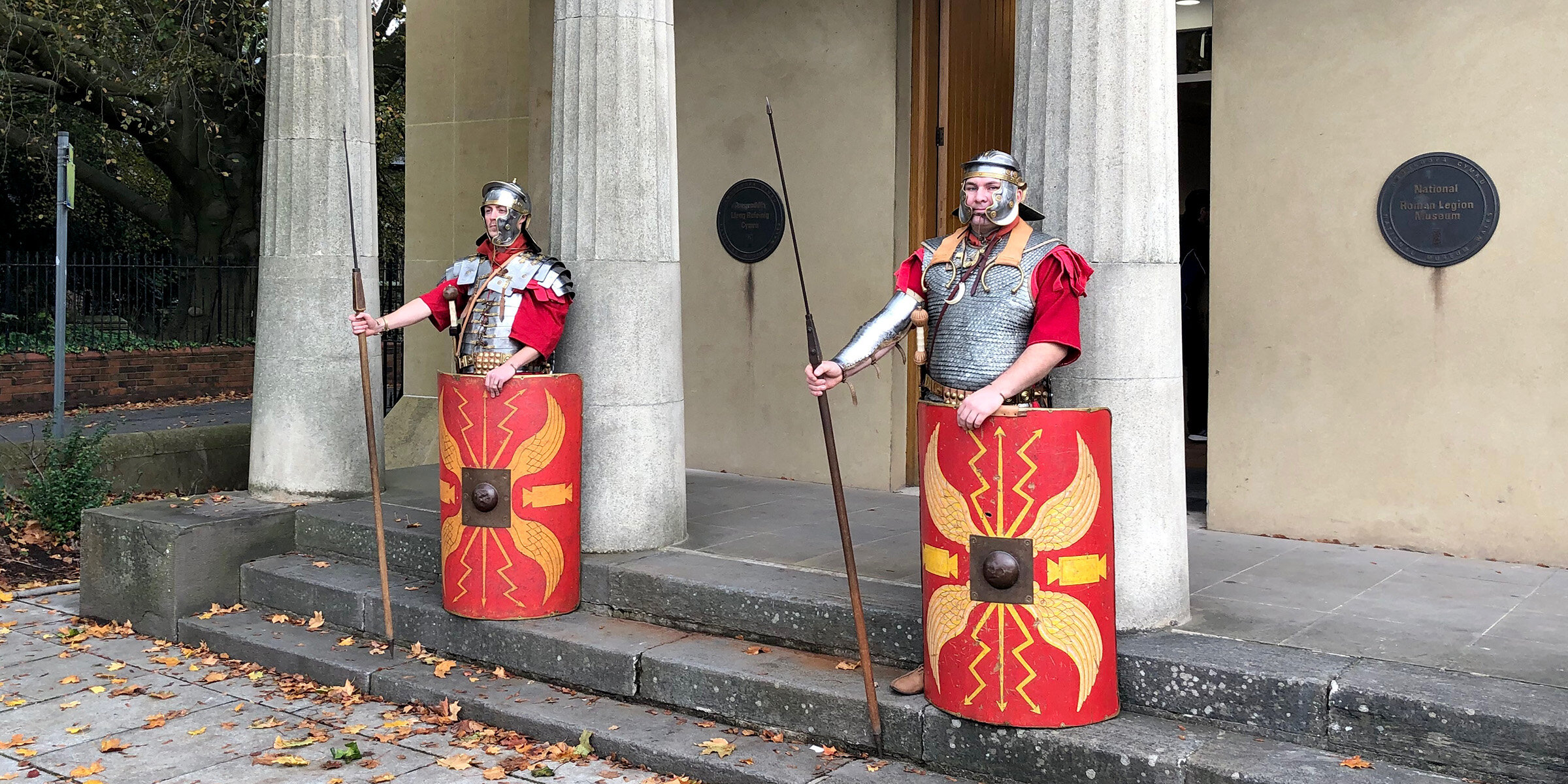In 2002, during construction of the Newport Riverfront Arts Centre on the west bank of the River Usk, the remains of a 15th century ship were discovered.
Artists reconstruction of the Newport Ship (David Jordan/Newport Museum & Art Gallery)
The ship was originally 35 metres long and carried around 168 tons of cargo, possibly wine. Analysis of the oak timbers showed that the boat had been constructed in about 1449 in the Basque region of northern Spain. Finds indicate it was probably trading between Bristol, then the country’s second most important port, and Portugal.
The remains of a cradle beneath the ships timbers suggested that it had been berthed for repairs when the supports collapsed and the ship crashed into the mud.
Some parts of the ship were salvaged at the time, but the starboard side was buried in the river mud, where it remained for the next 500 years. Analysis of the timbers suggest this happened sometime after the Spring of 1468. The anoxic conditions in the mud perfectly preserved the ships timbers along with much organic material, such as animal bones, leather shoes, plant materials, and parts of the ships pump, one of the earliest examples yet found.
A leather shoe, almost perfectly preserved in the anoxic mud, one of over 1000 artefacts recovered along with the ship’s timbers (© Newport Museums and Heritage Service)
French ‘petit blanc’ silver coin, discovered during conservation inserted into the joint between the keel and stem of the ship, possibly for luck.
A perfectly preserved skeleton of a young man discovered under the remains of the ships cradle timbers was originally thought to have been a casualty when the cradle collapsed. Radiocarbon dating later showed he had died around 180 BC, and his discovery was another lucky accident.
After its discovery, the ship’s oak timbers were recovered and conserved at a special facility, a process that has taken over 10 years. Over 22,000 people visited the excavation site as it was being recovered. Eventually, it is hoped that the remains of the ship can be pieced back together and displayed to the public in Newport.
Other ship discoveries
The Newport Ship is not the first vessel to be discovered on the Gwent Levels, nor is it the oldest.
In 1990, archaeologists discovered fragments of a Bronze Age boat near Caldicot Castle dating from around 1800 BC.
In 1993, an archaeological dig at Goldcliff unearthed two planks from a Bronze Age ‘sewn’ boat, dated to around 1000 BC. ‘Sewn’ boats were a type of flat-bottomed barge composed of wooden planks bound together with plant fibres. Such vessels were used to transport people, goods and livestock across and along tidal rivers and along the coasts of estuaries.
Archaeologists working on the recovery of the Magor Pill boat (© Amgueddfa Cymru - National Museum Wales)
The same year, builders working on the construction of the EuroPark near Magor discovered the remains of a 4th century Romano-Celtic boat, the Barlands Farm Boat. The vessel, measuring 11.4 x 3.2 x 0.9m, was remarkably intact and shares some features with boats from south-west Brittany described by Julius Caesar in 56 BC (read more…).
In 1995, the wreck of a 13th century ship was discovered in the mud near Magor Pill. The clinker-built ship had been carrying iron ore from Glamorgan and foundered at the mouth of the pill, near what was then a small port (read more…).
All four vessels have been recovered and conserved.
More information
For more information visit the Friends of the Newport Ship website.
The Archaeology Data Service has a comprehensive archive of reports and photographs from the Newport Ship project free to view and download.
Website











